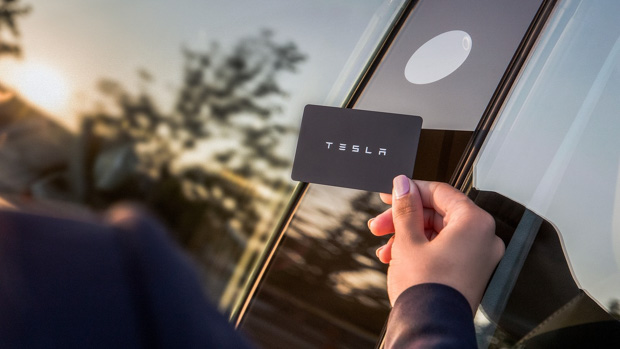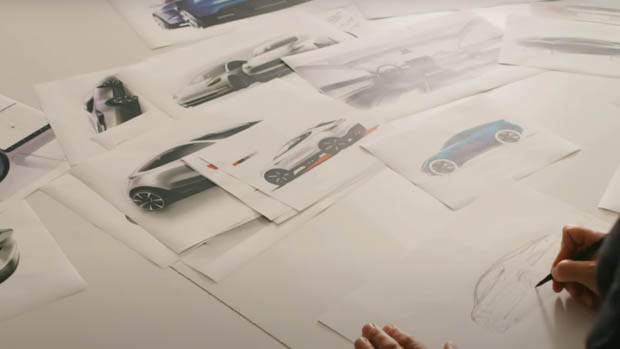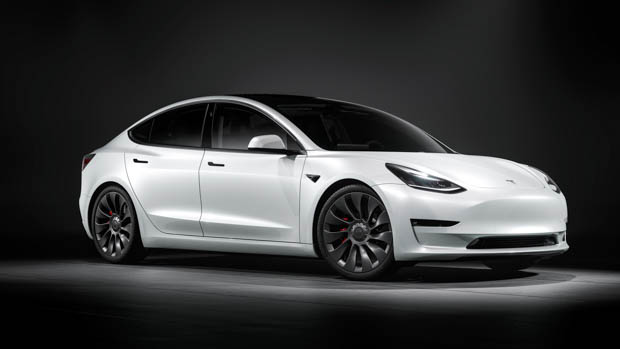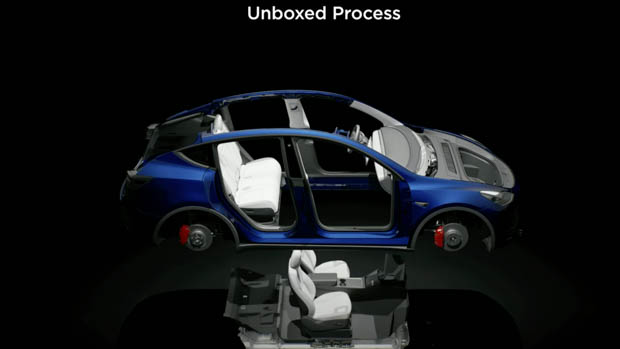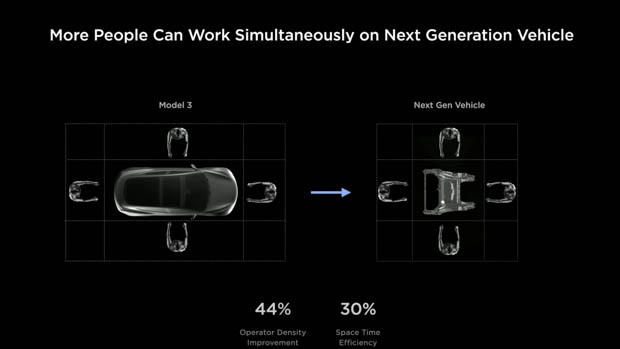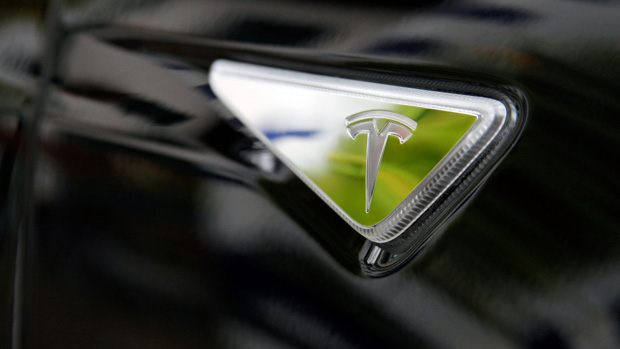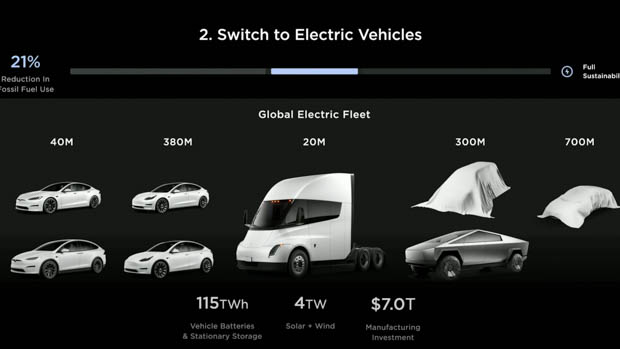-
Car Reviews
- All reviews
- Midsize SUVs
- Small cars
- Utes
- Small SUVs
- Large SUVs
- Large cars
- Sports SUVs
- Sports cars
- Vans
Latest reviews
- Car News
-
Car Comparisons
Latest comparisons
- Chasing Deals
Tesla wants to rewrite how it builds cars, using new technologies, systems and software and at a lower cost
Tesla has a big challenge ahead. The American-based carmaker wants to build 20 million cars a year by 2030, but to do so, the company has to overcome a lot of challenges.
Currently, Tesla builds around 1.8 million cars per year – a lot less than that 20 million per annum target – but it says that its next generation of cars will help the company get there.
The key changes that Tesla plans to introduce affect both the vehicle make-up and the manufacturing processes to produce them. At Tesla’s Investor’s Day, the company talked a lot about what is to come. Let’s have a look at each sector of the business and how this next-generation of cars could look.
Tesla has announced that all of its next-generation cars, including the Cybertruck, will move to 48-volt system architecture. Most modern cars run off a 12-volt system, so this is a big change for the automaker.
Why 48 volts? A 48-volt system is superior as it allows onboard systems and electrical components to provide quicker functionality and results because there is more electrical current running through the system. Wiring looms are therefore simplified and can be lightened as a result.
Tesla will also incorporate its vehicle software in the assembly process, letting factory workers know if a certain part has been installed correctly or not.
Tesla has been able to design its own custom microprocessor for its next generation of electric powertrains.
One benefit is that the company says there will be 75 percent less silicon carbide used for the inverter, which in turn results in a claimed 50 percent reduction in footprint.
Tesla says its next-generation drive units could cost as little as USD$1000.
Unlike some other manufacturers, Tesla designs its own in-house electronics, however a Tesla uses more semiconductors than a typical ICE vehicle.
The brand has stated it needs eight million wafer chips to build 20 million cars from 2030, however it has been able to produce them itself rather than sourcing from major chip suppliers such as Nvidia and Qualcomm – bypassing an issue that has plagued the industry for quite some time.
Tesla says that along with building its own chips, it is implementing more automation for manufacturing its next-gen cars in the face of rising labour costs.
The brand has also been able to build online 3D video simulations to work on manufacturing processes before they are implemented.
Tesla’s next cars will be built using giga castings – essentially massive steel presses – along with a mix of balance and series manufacturing with what Tesla calls the ‘unboxed process’.
The unboxed process basically works by assembling the Tesla vehicle independently in bits and then bringing the car together on the assembly line.
While that might seem similar to a traditional assembly line, Tesla is able to get more people working on individual parts and also reduce the amount of time spent installing parts in the cramped confines of the vehicle.
Tesla claims that by adapting its manufacturing process, it could see a 50 percent reduction in costs and a 40 percent reduction in manufacturing.
Tesla has announced it will enter the mineral refining space by building a new lithium plant in Texas and has even talked about the possibilities of entering the mining sector.
Although it’s clearly not high on the priority list, Elon Musk has said that “we will get into it if we have to”.
Tesla will also work on improving its supercharger network, including opening up its chargers to other manufacturers, as we’ve reported on in the past.
Tesla also showed images of a Tesla charging and restaurant space at the Investor Day that looked a lot like an American diner, but did not comment on it.
Latest news
About Chasing cars
Chasing Cars reviews are 100% independent.
Because we are powered by Budget Direct Insurance, we don’t receive advertising or sales revenue from car manufacturers.
We’re truly independent – giving you Australia’s best car reviews.
